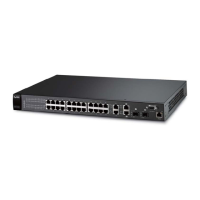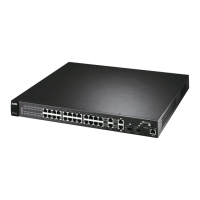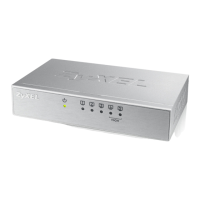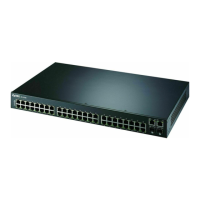ES-4124 User’s Guide
176 Chapter 25 OSPF
The following figure depicts an OSPF network example. The backbone is area 0 with a
backbone router. The internal routers are in area 1 and 2. The area border routers connect area
1 and 2 to the backbone.
Figure 81 OSPF Network Example
25.1.2 How OSPF Works
Layer 3 devices exchange routing information to build synchronized link state database within
the same AS or area. They do this by exchanging Hello messages to confirm which neighbor
(layer 3) devices exist and then they exchange database descriptions (DDs) to create the link
state database. The link state database in constantly updated through LSAs (Link State
Advertisements).
The link state database contains records of router IDs, their associated links and path costs.
Each device can then use the link state database and Dijkstra algorithm to compute the least
cost paths to network destinations.
25.1.3 Interfaces and Virtual Links
An OSPF interface is a link between a layer 3 device and an OSPF network. An interface has
state information, an IP address and subnet mask associated with it. When you configure an
OSPF interface, you first set an interface to transmit OSPF traffic and add the interface to an
area.
You can configure a virtual link to establish/maintain connectivity between a non-backbone
area and the backbone. The virtual link must be configured on both layer 3 devices in the non-
backbone area and the backbone.
25.1.4 OSPF and Router Elections
The OSPF protocol provides for automatic election of Designated Router (DR) and Backup
Designated Router (BDR) on network segments. The DR and BDR keep track of link state
updates in their area and make sure LSAs are sent to the rest of the network.

